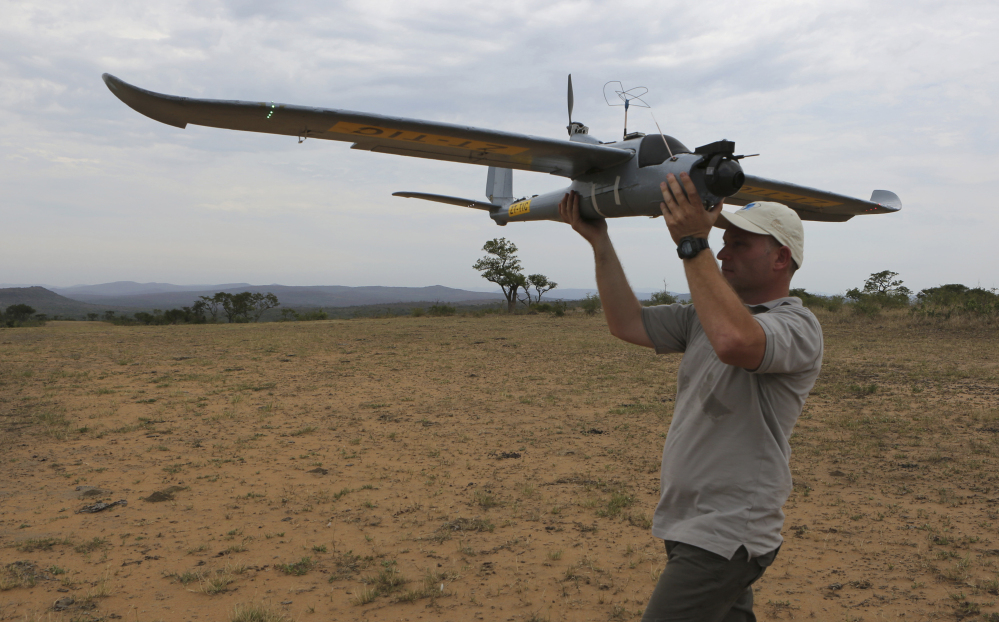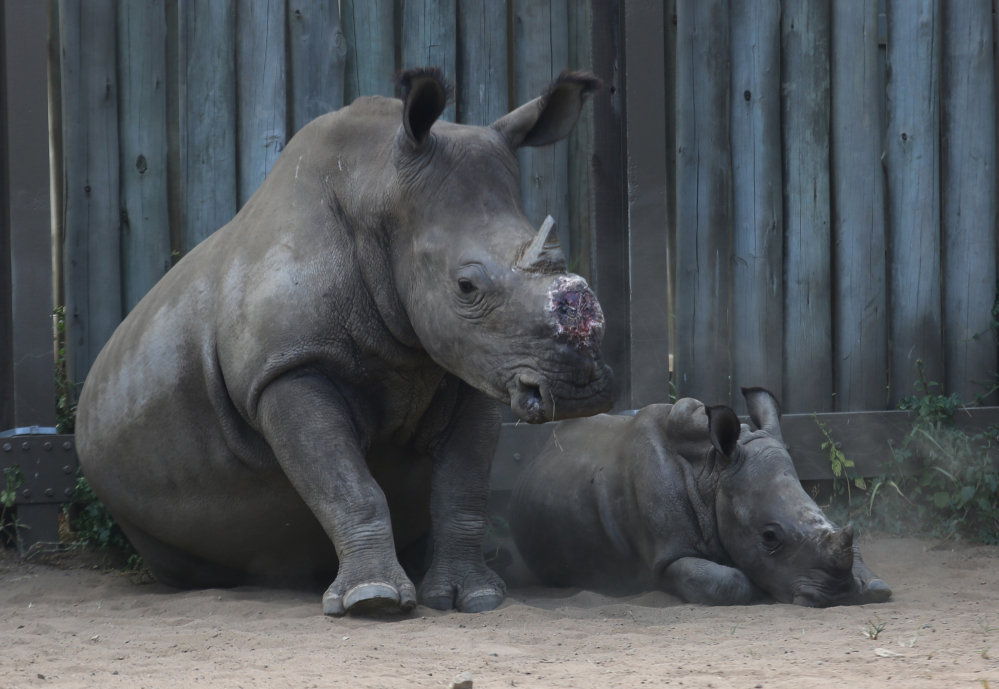HLUHLUWE-IMFOLOZI GAME RESERVE, South Africa — In hills where Zulu royalty once hunted wildlife, South African conservationists now scan live video from a thermal-imaging camera attached to a drone, looking for heat signatures of poachers stalking through the bush to kill rhinos.
The unarmed drone, which resembles a model airplane, flies several miles from a van where an operator toggles a video-gaming control, zooming and swiveling the craft’s camera. The nocturnal surveillance in Hluhluwe-iMfolozi Game Reserve comes amid international discussion about whether technology, particularly drones, will make a real difference in anti-poaching efforts that often rely on the “boots on the ground” of rangers on patrol.
Several years ago, drones were touted by some as a silver bullet for conservation, but some experiments have foundered. Even so, drone technology is developing quickly and the aircraft have been used around the world, including:
n In Belize, where the Wildlife Conservation Society helped deploy drones to successfully monitor a protected reef area for illegal fishing.
n In Indonesia, where drones have surveyed threatened orangutan habitats.
n In Africa, where the World Wildlife Fund is exploring the use of drones and other anti-poaching technologies, using funding from Google.
“It’s a very dynamic battle space where the poachers are continually responding to advances in technologies,” said Arthur Holland Michel, co-director at the Center for the Study of the Drone at Bard College in Annandale-on-Hudson, New York.
Poachers could, for example, seek vegetation cover to try to avoid being spotted by drones or use informants to monitor drone teams.
“They have great potential,” Wilkie said of drones. “I think they’re not there yet.”
Wilkie said groups with limited budgets often opt for types of drones used by hobbyists. A military-grade, aluminum drone could be more effective, he said.
Searching for poachers with drones in Africa’s vast wildlife reserves can seem like a needle-in-a-haystack operation. Costs mount, crashes are frequent, equipment breaks down, rain or high wind can scrap a mission and even before operations start, legal and bureaucratic obstacles must often be overcome in countries that tightly regulate airspace.
In a drone mission in Hluhluwe-iMfolozi recently observed by an Associated Press team, operators looked for heat-emitting objects that appear white and vertical on the screen, similar in shape to a rice grain. Three vertical rice grains are a giveaway because poachers often work in threes – a tracker, a shooter and a carrier with supplies and an ax to hack off rhino horn for eventual sale on an illegal Asian market.
The operators didn’t spot any suspected poachers or need to notify rangers by phone or radio, though they saw horizontal heat signatures from wildlife, including a rhino and a calf..
“All we’ve learned to do is to fly and to live in the bush. It can only get better from here,” said Otto Werdmuller Von Elgg, director of UDS, a fledgling South African firm that operates the drone team in Hluhluwe-iMfolozi. It has another at Kruger National Park, the country’s biggest wildlife reserve.
Poaching levels dropped in some areas where UDS flew and picked up after it left, possibly indicating poachers were scared by the drones, according to Von Elgg. He said he worries about corrupt park staff who might tip poachers to drone team whereabouts.
Copy the Story LinkSend questions/comments to the editors.




Success. Please wait for the page to reload. If the page does not reload within 5 seconds, please refresh the page.
Enter your email and password to access comments.
Hi, to comment on stories you must . This profile is in addition to your subscription and website login.
Already have a commenting profile? .
Invalid username/password.
Please check your email to confirm and complete your registration.
Only subscribers are eligible to post comments. Please subscribe or login first for digital access. Here’s why.
Use the form below to reset your password. When you've submitted your account email, we will send an email with a reset code.